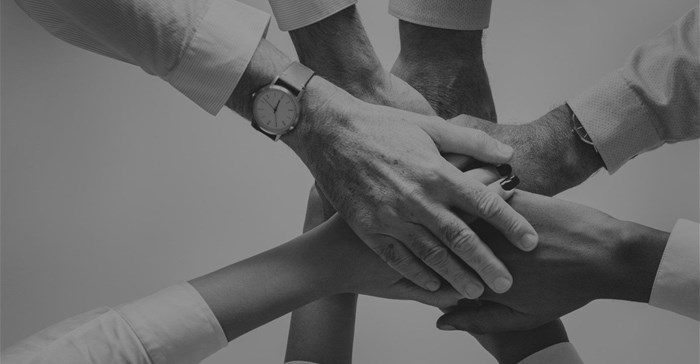When I started my career, I had the privilege to work overseas on the cruise ships, travelling the world and the seven seas. I still remember prior to leaving for the United States, there was a long list of orientation and training to attend before I could get assigned the job, to prepare me for the “Ship Life”. When I finally arrived, it was weeks of induction and training. Surprisingly, culture induction played a very big part of the training in these two weeks, apart from the necessary skills training.
Successful inclusion exists…
One of the first things the captain of the ship told the “newbies” in his broken English, was this: “You will be working and living on this ship for 6-8 months and you are all different. You all come from a different culture and background.
Many people who work here represent countries who are at war with each other back home. We have over 70 nationalities represented here. We all respect each other’s differences.
For us to live in harmony with each other, we need to reach out and learn from each other and strive towards one goal: Making our guests happy and giving them the best experience because that is why we are all here. This is a place where we prove to the world that peace on earth does exist and we all can celebrate and learn to better ourselves by learning from each other.”
Those words never left me. Respect is the result when there are better understanding and one common goal. The one important lesson I learned on this journey is the importance of restoration. You can’t restore anything if you don’t understand what caused the differences in the first place.
How can businesses enforce restoration in the workplace?
I quote Desmond Tutu:
There is a need for understanding but not for vengeance; the need for reparation but not for retaliation; a need for ubuntu but not for victimisation.
In order for us to move forward as a society and in our businesses, dealing with the past is essential to face the future. We can learn a lot from the work done by the truth and reconciliation commission. Personally, I believe South African businesses have a huge advantage to drive diversity inclusion, because of the continued commitment to Broad-Based Black Economic Empowerment.
Here are simple starting points for businesses to start the process of restoration:
1) Build an understanding: Understand the diversity that exists within the business that could range from human differences, including but not limited to race, ethnicity, gender, gender identity, sexual orientation, age, social class, physical ability or attributes, religious or ethical values system, national origin, and political beliefs. To understand better requires more listening than responding.
Josh Bersin, global industry expert in HR, called diversity and inclusion one of the hottest topics of 2019. He has said that it is “not an HR program, but a business strategy. It is true that the “needle is driven by HR”; however, it is not enough for it to be solely an HR program.
With Salesforce’s pledge to achieve workplace equality through its recent appointment of their first chief equality officer and diversity initiatives at more than 75% of Fortune 1000 companies, his prediction is coming true.
The issue stems from the fact that 70% of companies believe they are effective at attracting and retaining diverse employees, yet only 11% actually understand what it is.
This is why it is important for businesses to conduct an audit within their own organisation to understand where they rank on gender parity and disparity, gender equity, gender equality, and inclusion.
This allows organisations to measure and see where there is a need to change and introduce new values into the organisation
2) Study the history of diversity: There is a saying, where there is chaos, there is ignorance. History plays a very important role to understand the root of diversity. Telling people to be more inclusive will not have any impact unless you can provide context, in fact, it builds more resistance when it lacks context.
A great example is the recent ad campaign that entered the hot seat is the much-debated Gillette ad, which features an array of scenes depicting the everyday issues that not only women and children are faced, but also men, with issues such as gender inequality, bullying and catcalling among other societal ills.
The reality is that this ad highlighted problematic behaviour that’s conditioned society to accept it as normal. As they say, history is inescapable. History has the ability to connect things through time by understanding real living stories and connect the relevance to our present, to encourage and empower people to come from a place of understanding.
3) Take stock: Understand all the lessons we can learn from history and from each other. What caused diversity in the first place? As Albert Einstein famously quoted you can’t do the same thing over and over again and expect different results. By taking stock of what lead to diversity is the starting point for compassion, tolerance, and respect.
It also helps businesses to build a case to better inform and support the inclusion goals. Diversity is a prejudice or bias that connects to the way people were raised, the culture at the time, the individual’s views and beliefs, political and religious views and many other outside factors that are not necessarily influenced by the organisation but the business becomes the breeding ground for diversity to rear its ugly head if stock taking is not a core function of the business. Awareness creates knowledge. Knowing becomes doing.
4. Invest in education: Children at school are learning how to deal with gender fluidity and equality. Are we introducing these programs into the workplace? We can’t just put all our training efforts into digital transformation but also need to invest in cultural behaviour change to empower our employees to have more empathy and understanding.
Starbucks recently had a racism issue and closed thousands of stores to send the staff for an anti-bias training session in recognising and overcoming ingrained prejudices. If you are not privy to large training budgets, get an expert in to come and talk to the staff and drive awareness to shine a light on equality and inclusion.
5. Inclusion policy: In order for organisations to strengthen and accelerate inclusion, it is important to commit by putting systems, procedures, and policies in place. When implemented, this is a great leap forward towards the future of inclusion.
6. Reverse mentorship programs: Pair people from different backgrounds and beliefs together in order to encourage learning. Even encourage older executives with younger female staff which will help change invalid sexist attitudes for example. This will certainly help to put aside stereotypes and to transcend the aspirations for an inclusive culture.
6. Healthy debates: Encourage healthy debates between staff to build an understanding and empathy for each other’s position. One can’t change what you don’t understand. A great way to do this is to introduce monthly “petcha kutcha” sessions and nominate a different employee to do the research and present on a topic that highlights issues in the workplace. This way it sets the tone and a healthy debate can spark from this.
I hope you have found these ideas useful and would like to close off by saying the following:
Diversity is being invited to the party; inclusion is being asked to dance. - Verna Myers
Sources: - https://ideal.com/diversity-and-inclusion/
- https://www.w24.co.za/SelfCare/Wellness/Mind/mens-response-to-the-gillette-ad-is-a-way-of-saying-they-dont-want-to-be-told-to-be-better-people-20190117


















































